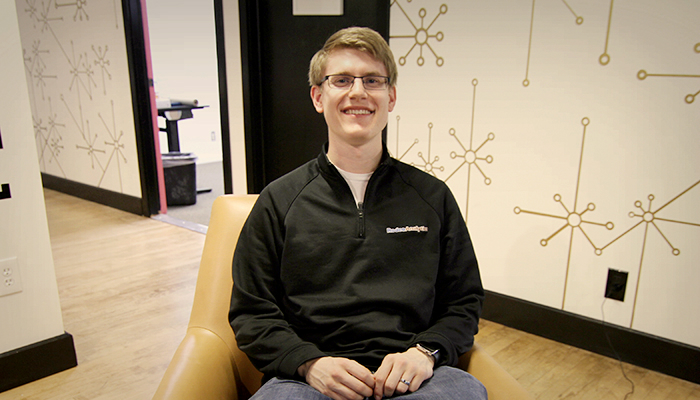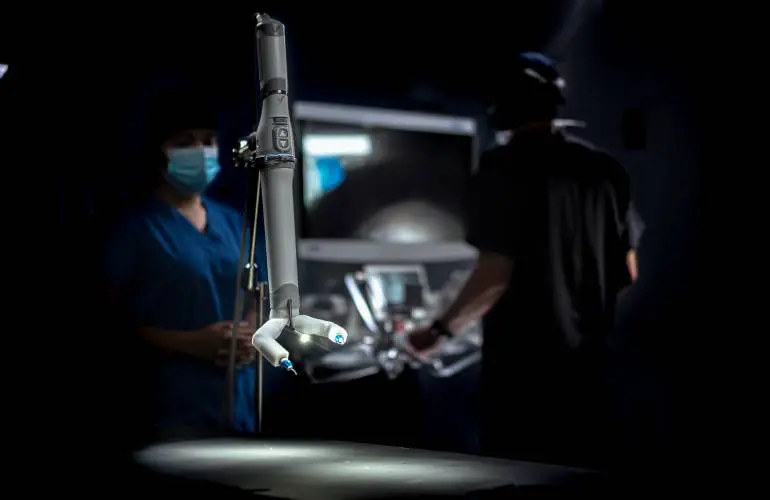After years of observing his wife compete in barrel racing, Alex Adams grew fond of the passion and hard work behind equine culture.
“She was always looking for a way to improve her performance,” said Adams, founder and CEO of Rodeo Analytics. “She couldn’t find too much that would help her besides trainers and clinics. She was looking for something that would give her more of a competitive edge.”
Adams explained that although there is good information to receive from clinics and other educational environments, there are certain things that the human eye just can’t see.
BECOME A SPONSOR
Join us in championing the narrative of success, resilience, and ingenuity that defines Nebraska’s startup community. Learn more »
“Computer vision is much better at identifying these things and provides a much easier way of interpreting the performance,” said Adams.
Using video to analyze equine performances
Rodeo Analytics, which SPN covered last July, works by setting up cameras around the perimeter of an arena and films the riders.
“We analyze that film to break down their run in a much more objective manner. Usually this is in the form of path and speed information at the moment,” said Adams.
Adams explained that the software allows riders to objectively look at the information and be able to better understand how to adjust and tweak their performance. Adams said the information is applicable to some equine sports, but not quite as applicable to others.
Adams showed us a video of his most recent work which featured a group that was team roping. There was one video of the performance and another video that plotted the team’s movements on a graph. Below is a video of a rider barrel racing from their Youtube channel.
“We start tracking the header, the heeler and the calf and we follow them throughout their performance,” said Adams. “As soon as they start, we can pause it at certain locations so that the viewer can pick up on the orientation.”
Adams explained that videos like these can help show the proximity of the riders to one another as well as different objects on the ground. The analytics also display their speeds at certain moments.
“Everything happens really quickly, but with this software we’re trying to provide much more visual ways for the riders to interpret the performance,” said Adams.
Getting the equine industry to embrace new technology
Rodeo Analytics is one of the eight new startups that started at the Straight Shot accelerator this week. Like many entrepreneurs, Adams is trying to answer how to enter into an industry and provide their service to as many people as possible. This is a question he hopes to answer while working with Straight Shot.
“It can be difficult to navigate that course and figure out the logistics,” said Adams. ”The actual analysis itself has already been figured out, the more challenging component is figuring out how to get access to the riders to use the software.”
Adams explained that the equine industry is very slow to adopt new technology.
“It’s difficult to seeing something that works and not being able to get it into the hands of everyone as fast as you want to,” said Adams. “I think part of that issue is that since there are not as many solutions provided in that space, there aren’t as many resources put towards it in comparison to other industries.”
Adams explained that he’s going after a very specific market and that it takes a lot to change perceptions.
“It makes that mentality behind adopting new products a much more intricate process,” said Adams.
X Factor Roping and Rodeo Analytics’ revenue model
The platform currently has a few users from an entity in Texas called X Factor Roping.
“We’re doing some analysis work remotely for them,” said Adams. “They do educational team roping events.”
Adams explained that the most exciting thing for him to see is when a rider uses their platform to improve their performance.
“I followed up with a rider, and she was able to see her path, adjust her training, and was able to use that information to improve her time the following week,” said Adams.
The current revenue model for the startup is charging a fee for each individual run. Adams said they hope to have a subscription model in the future.
“As time goes on, and we have more coverage of events, it would make much more sense to go to a subscription model,” said Adams.
He explained that the difficult part of moving to a subscription model is that riders go to a wide variety of events that are across a very large range of geographical regions.
What’s next for the equine industry
When asked about the future of the equine industry, Adams said it’s difficult to make projections, but he thinks the industry will start to pick up on a lot more of the technology services that are available in other sports.
“Which technologies are actually adopted is kind of to be determined because a technology that may be useful for one sport, may not fit the needs of other sports within the industry,” said Adams.
Adams explained that the big vision for the startup is to help riders see their full potential and to help them achieve it.
“With the amount of effort they put into the sport, they should be able to realize their full potential, and we want to help them get to that point,” said Adams.
–
Melanie Lucks is a communications intern for Silicon Prairie News and AIM Careerlink.




